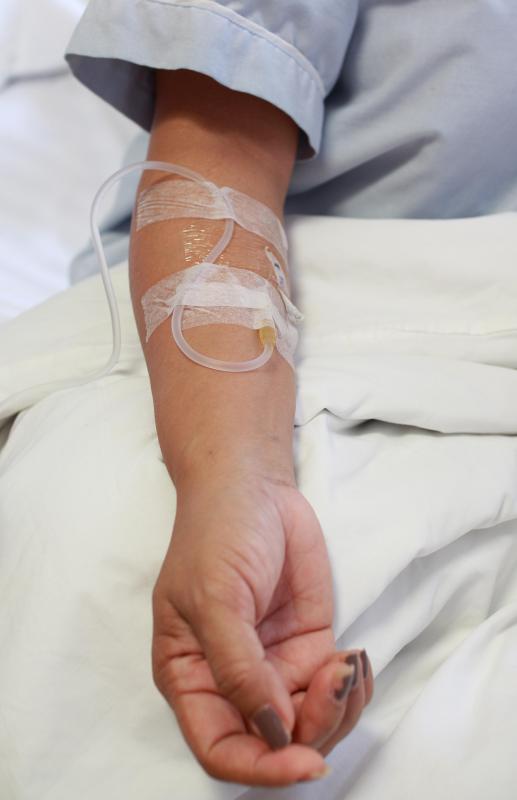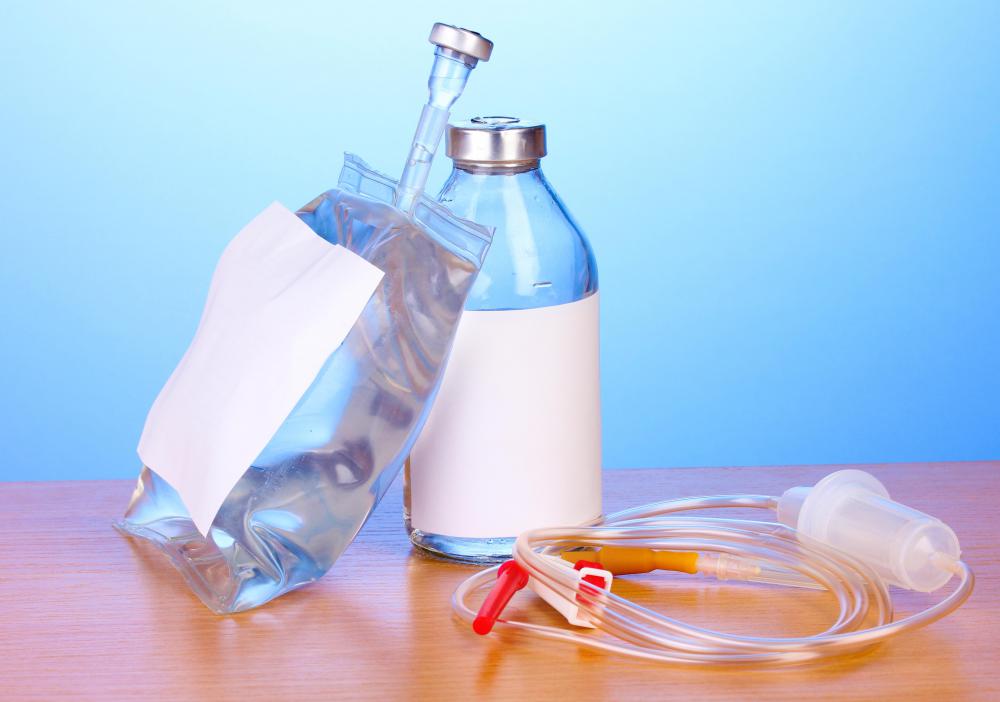At WiseGEEK, we're committed to delivering accurate, trustworthy information. Our expert-authored content is rigorously fact-checked and sourced from credible authorities. Discover how we uphold the highest standards in providing you with reliable knowledge.
What Is a Saline Flush?
A saline flush refers to the instillation of a small amount of saline solution into the body using a tube or catheter on an intermittently scheduled basis. The flush is performed to ensure continued patency — or lack of obstruction — preventing a clot or other material from clogging the line. Feeding tubes, also known as enteral lines, that enter the gastrointestinal (GI) system can be safely flushed with either saline or sterile water after each tube feeding. Intravenous (IV) lines, however, specifically require a saline flush, as this solution is osmotically neutral in the bloodstream. These flushes are usually scheduled once every eight hours and before and after administration of medication through an IV line.
For IV lines that are continuously in use, a saline flush is not necessary; the infusing IV fluid itself prevents clot formation. A regular saline or heparin flush is necessary, however, for saline locks, also known as PRN adaptors or heparin locks, as these devices are only used intermittently. In medical terms, a lock is the external access port of an indwelling intravenous (IV) catheter. These short, clear plastic cylinders are attached to the catheter within a vein on one end and display a port for administration of IV fluids on the opposite end. Depending upon the facilities protocol, locks are filled with a dilute heparin solution or saline.

A saline lock allows immediate IV access should an emergency occur, or intermittent access — such as in the administration of a regularly scheduled IV antibiotic — without requiring the patient to be continuously harnessed to IV fluid and an IV pump. Before the development of a saline lock or a saline flush, IV fluids were often prescribed to be administered "KVO," or "keep vein open." A KVO rate referred to an infusion of the minimum amount of fluid required to prevent the IV access from clotting, usually less than 50 ml per hour. The advent of the lock and the saline flush now allows for greater patient mobility and less opportunity for leakage of an infusing fluid into the tissues surrounding an IV site.

Any syringe and a bottle of normal saline solution can be used to prepare a saline flush. Advances in technology and infection control, however, have led to the pre-prepared saline flush now used in many facilities. In addition to saving time, prepared flushes allow less opportunity for pathogens to enter into the process as they are prefilled under sterile conditions and ready for use. They also utilize a variety of short 10 ml-size syringes to decrease pressure on the vein during the saline flush process. The use of 10 ml syringes results in fewer veins "blown" or injured by excessive pressure.
AS FEATURED ON:
AS FEATURED ON:












Discussion Comments
If a saline flush is not performed after the use of the connecting line there is the possibility of clot formation or a clog of the material provided. This can cause severe problems, requiring the tube or catheter to be removed and replaced if a clog or clot. There is also a greater possibility of damage to surrounding tissue or the creation of a septic environment at the point of contact.
What happens if a saline flush is not performed?
Post your comments